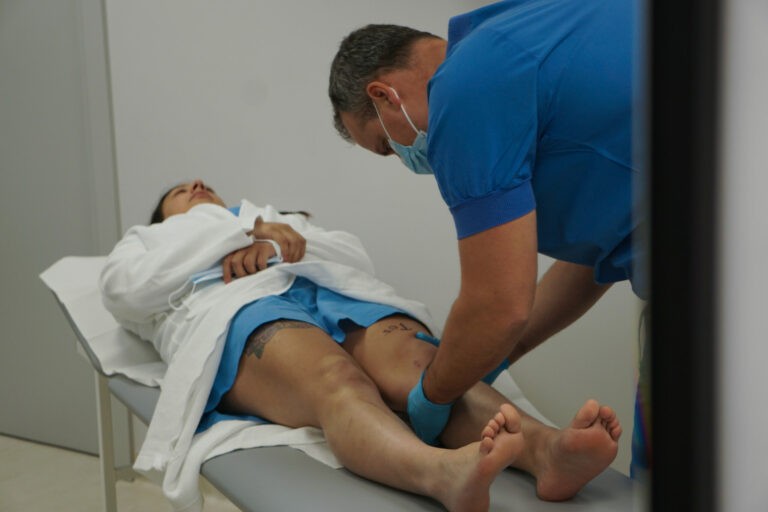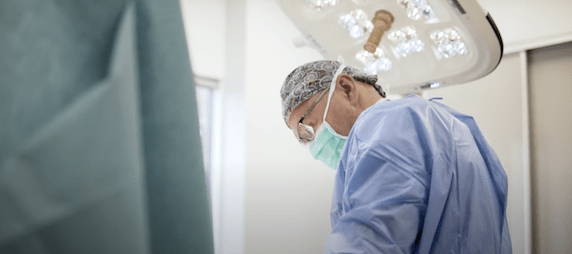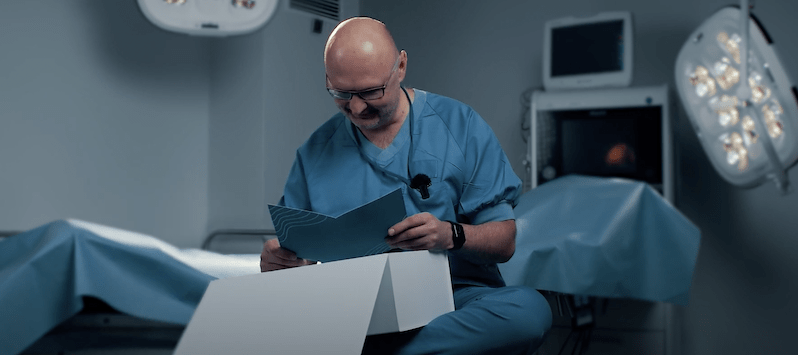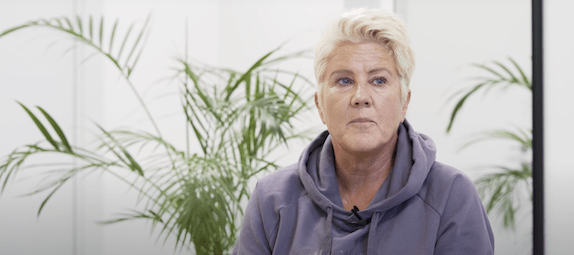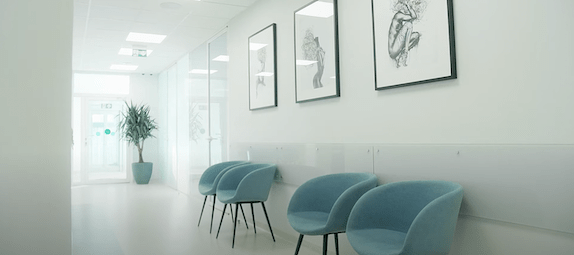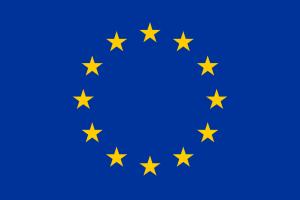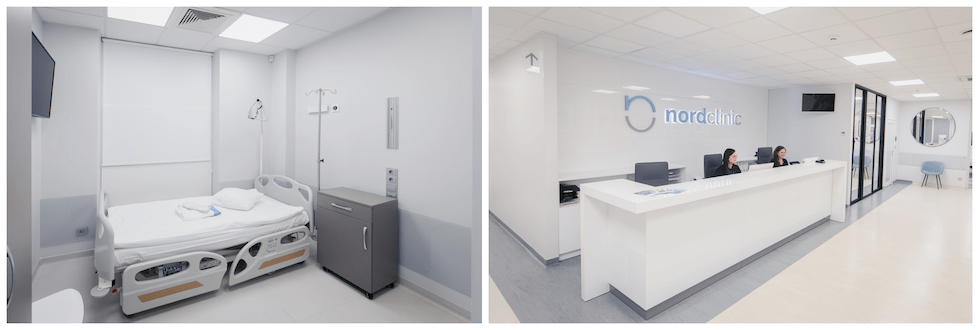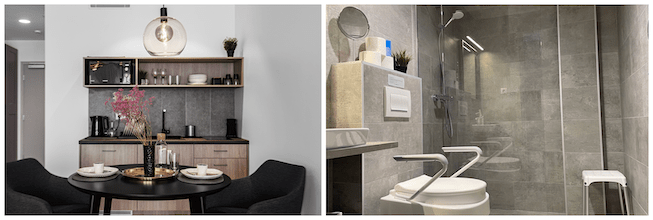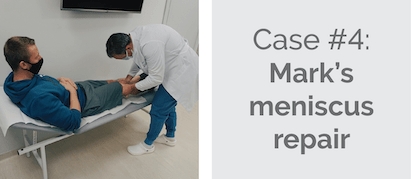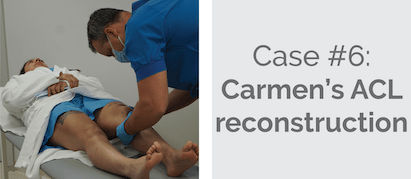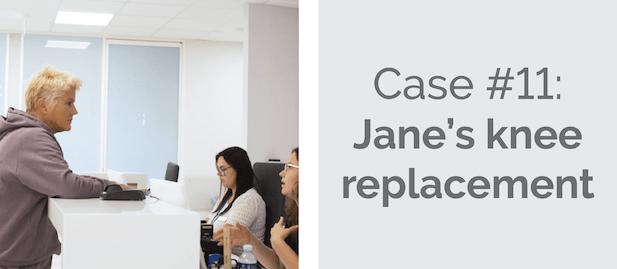ACL Reconstruction Surgery Abroad: Lithuania
We are one of the leading orthopaedic surgery clinics for medical tourists in the European Union. We are proud of the fact that over 90 % of our patients come from the UK, Ireland, Norway, Sweden, the United States, Canada and other countries.
Reviews & Facebook group
Our patients and clinic in the media
Prices
Price in GBP
Price in EUR
- ACL reconstruction surgery – 2.900 £ | or 1.670 £ with S2 funding*
- MCL reconstruction surgery – from 2.900 £
- PCL reconstruction surgery – from 3.730 £
- MRI performed in 1 day – from 155 £
- 2 online prehab consultations (upon request) – 86 £
- rehabilitation after surgery – from 100 £ per day
*Your surgery can be partly funded via the S2 funding route (read more in the next tab)
- accommodation with medical care – from 62 £ per night
The S2 route may entitle you to NHS funding for planned state healthcare treatment in Lithuania. You can save up to 40% for the ACL surgery. Contact our customer service for more information:
- ACL surgery
- 2.900 £ without S2 funding
- 1.670 £ with S2 funding
- consultation with the surgeon
- necessary health tests
- surgery
- implants
- anaesthesia
- hospitalisation
- 24/7 personal assistance during your stay
- transfers to / from the airport, hotel and clinic
- all documents translated to English
Get your surgery for free by claiming a refund from your local health board. The clinic helps patients with the documents needed to claim a refund after following the EU directive route for medical treatment abroad. It applies to patients who are insured under the systems of one of the EU countries and may not get the surgery due to long waiting times.
- ACL reconstruction surgery – 3.500 € | or 2.000 € with S2 funding*
- MCL reconstruction surgery – from 3.500 €
- PCL reconstruction surgery – from 4.475 €
- MRI performed in 1 day – from 180€
- 2 online prehab consultations (upon request) – 100 €
- rehabilitation after surgery – from 120 € per day
*Your surgery can be partly funded via the S2 funding route (read more in the next tab)
- accommodation with medical care – from 74 € per night
The S2 route may entitle you to NHS funding for planned state healthcare treatment in Lithuania. You can save up to 40% for the ACL surgery. Contact our customer service for more information:
- ACL surgery
- 3.500 € without S2 funding
- 2.000 € with S2 funding
- consultation with the surgeon
- necessary health tests
- surgery
- implants
- anaesthesia
- hospitalisation
- 24/7 personal assistance during your stay
- transfers to / from the airport, hotel and clinic
- all documents translated to English
Get your surgery for free by claiming a refund from your local health board. The clinic helps patients with the documents needed to claim a refund after following the EU directive route for medical treatment abroad. It applies to patients who are insured under the systems of one of the EU countries and may not get the surgery due to long waiting times.
ACL Reconstruction case analysis
Our patients in the media
Nordorthopaedics Center Of Excellence
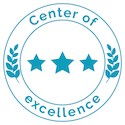
Our surgeon Valdemar Loiba
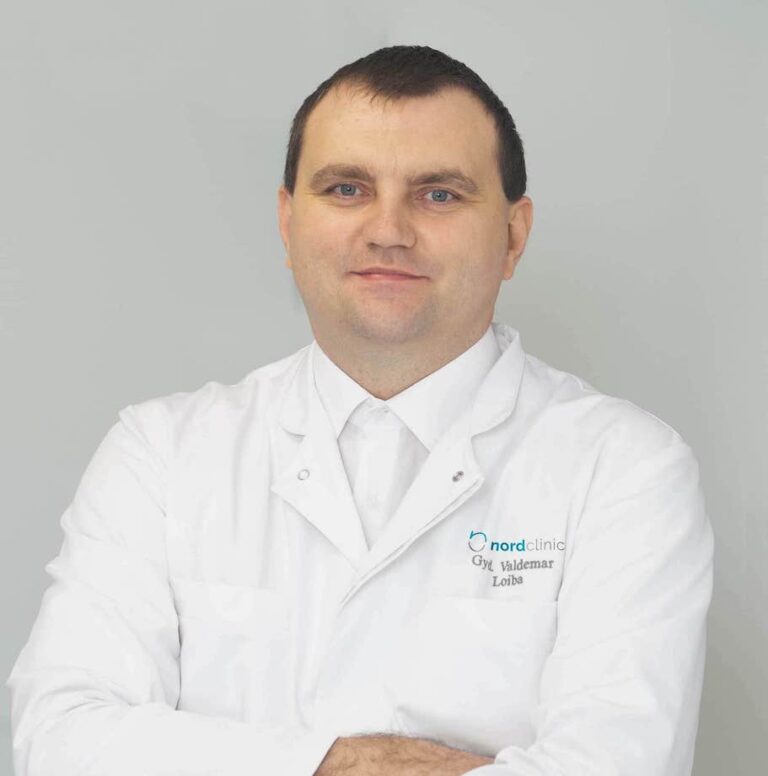
- More than 15 years of working experience
- Performs 400+ arthroscopies a year.
- Author of 6 international oral presentations
- Read more
Refund for EU patients
Get your surgery for free by claiming a refund from your local health board. The clinic helps patients with the documents needed to claim a refund after following the EU directive route for medical treatment abroad. It applies to patients who are insured under the systems of one of the EU countries and may not get the surgery due to long waiting times.
Rehabilitation package
One of the most important factors for a quick and full recovery after surgery is proper rehabilitation. Rehabilitation helps recover after surgery as well as prevents formation of blood clots and helps avoid most of the postoperative complications and side effects. Outpatient rehabilitation in Kaunas with a physiotherapist.
The rehabilitation clinic is equipped with modern facilities. Individual rehabilitation programs are prepared by a kinesiologist with over 20 years of experience, Prof. Laimonas Siupsinskas. This type of rehabilitation is best suited for people who are physically active, athletes and those wishing to return to sports as soon as possible.
Rehabilitation in Kaunas – € 120 / £ 100 for one 1 h physiotherapy session per day.
- personalized rehabilitation course;
- specialist who is also a physiotherapist for Lithuanian Men’s National Basketball Team;
- all required medication;
- transportation to/from the rehabilitation clinic;
- read more about outpatient rehabilitation in Kaunas.
Our clinic
Self-catered accommodation with medical care
11 reasons that make us the most popular orthopaedic clinic abroad
One of the most important factors for a quick and full recovery after surgery is proper rehabilitation. Usually, clinics are not able to offer this due to costs savings. Our patients can choose between two inpatient and outpatient options: rehabilitation with a physiotherapist of the Lithuanian national basketball team, prof. L. Siupsinskas or rehabilitation at a medical SPA.
Our team of 5 orthopaedic surgeons has 10-20 years of experience in the field in total performing over 1.000 different orthopaedic surgeries per year. Moreover, our surgeons are members of various prestigious surgical societies both Lithuanian and international. Our leading joint replacement surgeon S. Tarasevicius is an author of 150 scientific publications in different medical journals, who has performed more than 3.500 joint replacement surgeries during 15+ years of his professional experience.
We are one of the leading orthopaedic surgery clinics for medical tourists in the European Union. We are proud of the fact that over 90 % of our patients come from the UK, Ireland, Norway, Sweden, the United States, Canada and other countries.
One of the world’s leading medical technology companies and orthopaedic implant manufacturers, Smith & Nephew, have chosen Nordorthopaedics as Center of Excellence in the Baltic States.
We are trusted by our patients and we appreciate all the reviews and feedback collected over the years. Find more than 150 testimonials here or on Google.
Already more than 4.000 of our former, current and future patients joined our online community with the aim to build a space for opinions and mutual support. Members are welcome to share experiences about their visit to the clinic and to discuss all surgery-related matters. No other orthopaedic clinic can offer such group support.
Being a true member of the International Society of Arthroplasty Registries, Lithuania is one of the leaders in low joint replacement revision rates, as only 9% of surgeries in Lithuania require revision in 10 years after surgery. Moreover, with the implants used at our clinic, only 2-3% of surgeries require revision in 10 years after surgery, while revision rates in some other Western countries, for example, USA, is as high as 17% in 10 years after surgery. The implants used at our clinic have been evaluated by other countries’ registries as those ensuring longest implant life, as compared to products of other manufacturers. Moreover, thanks to our active participation in collecting data for the registries, the surgical technique used at our clinic ensures best surgical outcomes.
Our clinic is seen on different media mentions like: BBC News, BBC Radio, The Telegraph, MailOnline, Winnipeg Free Press, CTV News, CBC, RTE Radio, itv.
Our clinic works according to the highest standards set by the European Union. This helps to guarantee the quality of medical services. We care about the safety, comfort and successful results of our patients from all over the world.
The clinic helps patients with the documents needed to claim a refund after following the EU directive route for medical treatment abroad. It applies to patients who are insured under the systems of one of the EU countries and may not get the surgery due to long waiting times.
We provide customer service in 9 foreign languages including English, Swedish, Norwegian, Danish, Italian, Spanish, French, Russian, Polish. Everyone in our clinic speaks English, including nurses, assistants and the surgeon.
Athletes treated at Nordorthopaedics
Official clinic of Lithuania national football teams

Highest quality implants
Our clinic uses implants based on their performance in international registries.
Being a true member of the International Society of Arthroplasty Registries, Lithuania is one of the leaders in low joint replacement revision rates, as only 9% of surgeries in Lithuania require revision in 10 years after surgery. Moreover, with the implants used at our clinic, only 2-3% of surgeries require revision in 10 years after surgery, while revision rates in some other Western countries, for example, USA, is as high as 17% in 10 years after surgery. The implants used at our clinic have been evaluated by other countries’ registries as those ensuring longest implant life, as compared to products of other manufacturers. Read more here.
13 patients' case studies
Direct flights to Lithuania





What is ACL and its function in knee anatomy?
Ligaments are strong bands that connect bones to each other. Anterior cruciate ligament (ACL) is a band of connecting tissue which is located in the knee. Four ligaments in the knee are responsible for its stability, two of which are an anterior cruciate ligament and a posterior cruciate ligament. These two ligaments cross each other connecting the lower end of a femur with the upper part of a tibia. ACL is a key structure in the knee as its main function is to keep the knee stable preventing it from sliding backwards and rotating inwards.
What is ACL repair and how is it performed?
ACL reconstruction surgery typically lasts from 1 to 2 hours and is performed arthroscopically, meaning that only a few incisions are made for an insertion of an arthroscope (a small camera which helps the surgeon to see inside the knee) and other surgical instruments.
A patient will receive either spinal anesthesia, which numbs the body from the chest down, or general anesthesia, which puts the patient to sleep for the duration of the procedure.
In the beginning, the damaged ligament and its remains are removed and the knee is inspected for any other injuries or damage. A new ligament is then harvested from a tendon (remember that a tendon is a bone to muscle connection) of the hamstring muscle. It will be used as an ACL graft. Then the surgeon will create attachment points for the new graft by drilling a tunnel in the upper end of the femur bone, and another one in the lower end of the tibia. A graft is then pulled through those tunnels and secured in place with screws to create a new ACL ligament. During the recovery period bone growth will fill in the tunnels and will further stabilize the graft.
What indicates that you might need an ACL repair surgery?
When ACL ligament is damaged a person usually has trouble putting pressure on the knee, walking, and playing sports. A slightly torn ACL is likely to heal and regenerate over time, especially after doing physical therapy. Unfortunately, if it is fully ripped it might need to be replaced, particularly if a patient is young and actively participating in sports.
Some of the signs of a torn ACL ligament may include:
- A “popping” sound during a trauma event and swelling
- Pain which ultimately develops in the injured area of the knee
- Limited range of motion and instability when performing everyday tasks can also indicate the need for ACL repair
- In order to further clarify if a patient actually requires surgical treatment a consultation with a specialist and evaluation of a CT scan or an MRI scan are needed.
Preparing for the surgery
Most of the people who experience ACL damage have their ACL replacement surgery scheduled a few weeks after the trauma. It is delayed in order to allow the swelling to go down before the procedure is performed. During the time before surgery, it is essential to prepare for the recovery period.
Firstly, you should purchase assistive devices, such as a walker, crutches, or a cane. Make sure to practice walking with them around the house so that you can rearrange any furniture and other items that might restrict getting around the house.
Furthermore, you will likely experience a lot of swelling and pain post-surgery, therefore, prepare a cold therapy system which would deliver consistent therapeutic cold. Check if there is an opportunity to rent a cold therapy system where you live. This device is much more effective and comfortable than ice packs.
If you are currently living on the upper floor, think about moving downstairs for at least a couple of weeks. Avoid getting up and down the stairs and refrain from putting strain on the operated knee. Prepare a lot of pillows as you will need to place them under your knee and lower leg. Elevating the leg will reduce postoperative swelling and speed up the recovery.
Before the surgery your knee should have a nearly normal and comfortable range of motion. Inquire your physician about specific exercises that will tone the leg muscles, especially hamstrings and quadriceps. Having your muscles strengthened before the procedure will get you going a lot faster after the ACL repair is performed.
It is extremely important that you have no bruises, cuts, or pimples on your legs as they highly increase the risk of infection.
Patients should cease smoking, taking oral contraceptive pills and consuming excessive amounts of alcohol at least 6 weeks before the surgery.
Hospitalization and early postoperative period
When you wake up from anaesthesia your knee will be bandaged and you might find a drain tube inserted. It helps to drain excess bleeding and reduce swelling. Hospitalization time depends on each particular case, however, most patients are discharged on the same day after the surgery. You will be given pain-relieving medication if required. You will be able to move the operated knee, however, the patients are encouraged to keep the leg elevated and allow it some time to rest. Before going home you will practice walking with some crutches. Most patients use the crutches only for a few days. Also, your doctor will fit you for a knee brace which helps to protect the graft.
For the first few days after the surgery your knee will be swollen and you might feel numbness around it. Most of the swelling should go down in the first week. You might feel tired for several days which is completely normal. As for all surgeries, allowing oneself to rest during the recovery period is a crucial part of the healing process. Try keeping your leg elevated at all times.
When at home, make sure to change the dressings of your knee regularly.
For pain relief your doctor may recommend you medications such as ibuprofen or naproxen sodium.
The recommended time off work depends on your line of work and how much, if any, physical activity it involves. In two weeks most of the patients can start walking without the crutches or a cane.
At home patients are recommended to use either a cold therapy system or to apply ice packs at least every 2 hours. Cryotherapy is proven to contribute to an overall faster recovery in several ways: it will lessen your perception of pain, control swelling, and reduce edema.
Physical therapy; returning to sports
Each patient’s response to physical therapy is individual, and the healing rates can differ as well. However, most people can walk within 3 weeks after their ACL surgery. You should be presented with a detailed plan of your physical therapy at the clinic. In general, physical therapy for the knee joint recovery can be divided into four phases.
- During the first three weeks post-surgery you should focus on letting your knee heal. You will then start physical therapy and work on restoring the movement of the thigh muscles and the range of motion. You should be able to bend your knee at 90 degrees. You will learn how to use crutches or a cane, and will practice walking up and down the stairs. A neuromuscular electrical stimulator can also be used to help you regain leg strength.
- On the fourth and the fifth weeks you will work on further strengthening your leg and hip muscles. Improved stability and motion control are crucial in order to progress from using two crutches to using only one, and finally putting them down altogether.
- On the third week you should be able to walk normally. Exercises will get more advanced and you might also start using light weights when exercising. People who are not athletes can now return to living their usual lives again, however, those who engage in highly active sports should continue on improving their physical shape.
- During the second month the patients perform exercises which help increase strength in the gluteal muscles as well as in the quadriceps (the muscles in the backside of the legs). Later on the patients move on to moderate plyometrics (jump training) and hopping. If by the end of week 8 the patients do not feel any pain in the operated knee anymore they should be already able to start jogging.
- During the third month patients will continue with the exercise regime. Those who are looking forward to getting back to sports should be evaluated by a training specialist. Bear in mind that it is important not to overestimate your capabilities as it might still be too soon to participate in professional sports or high-intensity activities which require a lot of sudden and sharp maneuvers.
Send us your enquiry




